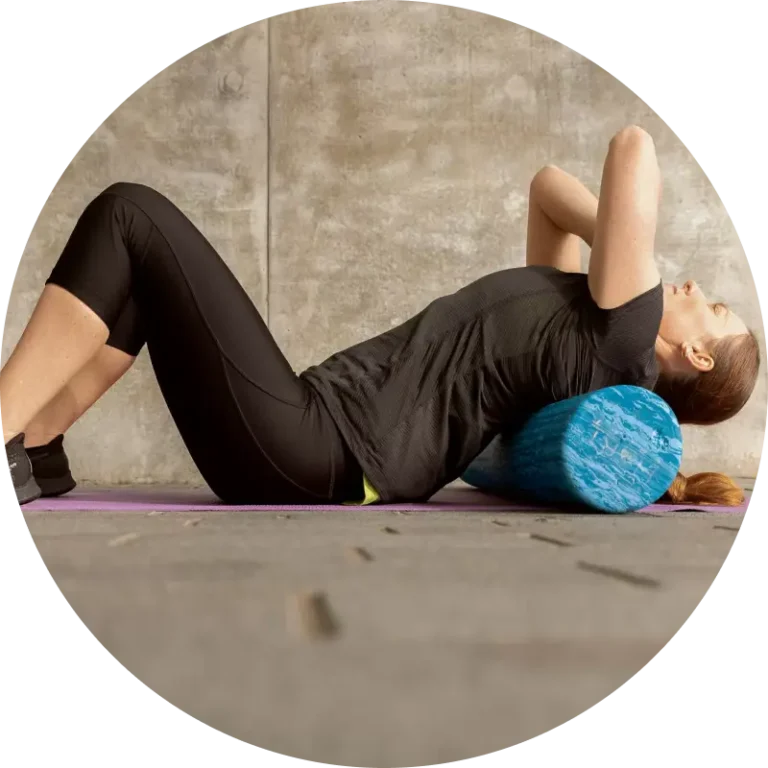Home » Exercise + Fitness » Thoracic spine extension with Foam Roller
Maintain and improve your upper back mobility and posture with a

The thoracic spine is also known as your upper back. It is here where your ribs attach at the front and around the back to the spine – they protect all your vital organs like your heart and lungs.
But, this makes it very hard to stretch and move this area. Long hours hunched over computers, or bending over heavy machinery we can loose the ability to get into a good posture.
Not being able to extend can affect how you lift things – overhead activities, deadlifting, and helping to load the spine properly. It can lead to shoulder ouchies and muscle imbalances – then comes the headaches.
If you are struggling with pain or feel “stuck” between the shoulder blades improving your upper back mobility is essential to avoiding this achy feeling.
It can also improve or aim to reverse forward posture we also adopt with computer work.
Thankfully, this very common exercise can help by using a simple foam roller and the spine extension exercise as described below.
Always consult your Health Professional to ensure this exercise is appropriate for you.
If, after trying this exercise you still have discomfort – please book in with our osteopaths or neuromuscular therapists to help get you get this sorted.

Anj Young founded Top Notch Bodyworks. She was a fitness instructor for the RNZAF for 13 years, a qualified physiotherapist, massage therapist and osteopath. Her and the team at Top Notch Bodyworks know their stuff and can help support you with your body concerns. Our osteopaths and neuromuscular therapists are also qualified to work with you at any stage of your injury or ongoing concerns.